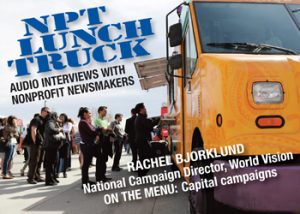More than 60 percent of donors prefer to give online — four times as much as any other avenue — and half are inspired to give by social media or fundraising events.
Those are some of the findings in the 2017 Global Trends In Giving report from the Public Interest Registry (PIR) and Nonprofit Tech for Good. The 17-page study by Reston, Va.-based PIR is based on survey results of almost 4,100 donors worldwide conducted from May through June. Nearly three-quarters of respondents were female and almost half were from the United States, and a quarter from Canada. PIR launched the .ngo and .ong domains in 2003.
- More than 91 percent of those surveyed donated in the past year, across a range of causes. The most common recipients of those donations were causes that dealt with:
- Children and youth (13 percent)
- Religious services and faith (10.4 percent)
- Human services (9.5 percent)
- Animals (9.2 percent)
- Health and safety (8.7 percent).
Some 61 percent of donors said they prefer to give online and were split evenly on their preference between direct mail and fundraising events — 14 percent each. Only about 6 percent give via mobile and one in 20 participate in workplace giving.
Half of donors say that they are most inspired to give by social media or fundraising events. More than one in five said they are inspired to give by email and one in eight are inspired to give by website. Only 5 percent of donors said traditional TV and radio inspires them to give while less than 1 percent for phone and text message.
Facebook is by far the social media that most inspires giving, at 62 percent, followed by Twitter (15 percent) and Instagram (10 percent). Other social media registered at less than 10 percent, including YouTube (6 percent), LinkedIn (3 percent), and WhatsApp (2 percent). Other social media were less than 1 percent.
Two-thirds of donors have volunteered with a nonprofit within the last 12 months, first inspired to get involved most likely through a fundraising event (44 percent) or email (22 percent). Volunteers were less likely to be inspired by social media (15 percent) and email (13 percent).
Almost 60 percent of donors attended a fundraising event within the last 12 months. Email (38 percent) was the most likely channel to inspire them, followed by social media (28 percent) and events (23 percent).
Some 44 percent have donated to a crowdfunding campaign within the last 12 months and 16 percent have fundraised for a campaign within the last 12 months. A third have donated to a peer-to-peer fundraising campaign while 18 percent have created a peer-to-peer campaign.
Almost three-quarters of donors are most likely to trust websites and email addresses that end in .org, or .edu (7 percent) and .ngo (6 percent). Meanwhile, 30 percent of donors said they are least likely to trust websites or addresses that end in .net and 29 percent that end in .com.
Few respondents were conservative or somewhat conservative (13.5 percent) while almost a quarter considered themselves moderates. A third identified as somewhat liberal and another 28 percent as very liberal.
The largest segment of those surveyed were Baby Boomers (1946-1964), at almost 37 percent, followed by Generation X (1965-1980), 30 percent, and Millennials (1981-1997).











